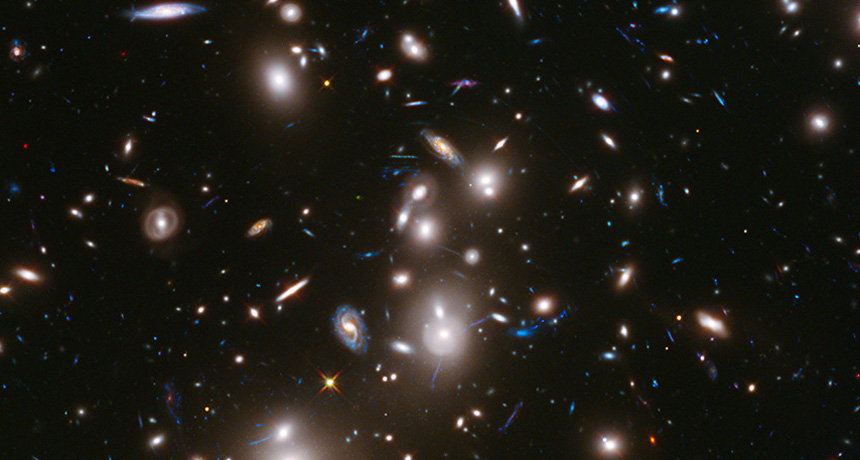Faint, distant galaxies may have driven early universe makeover
Hubble telescope finds clues to cause of cosmic reionization, study claims

LIGHTEN UP Some of the faintest, most distant galaxies detected to date (arcs) appear in this Hubble Space Telescope image of the massive galaxy cluster Abell 2744. The cluster acts as a gravitational lens, magnifying light from galaxies much farther away.
NASA, ESA







